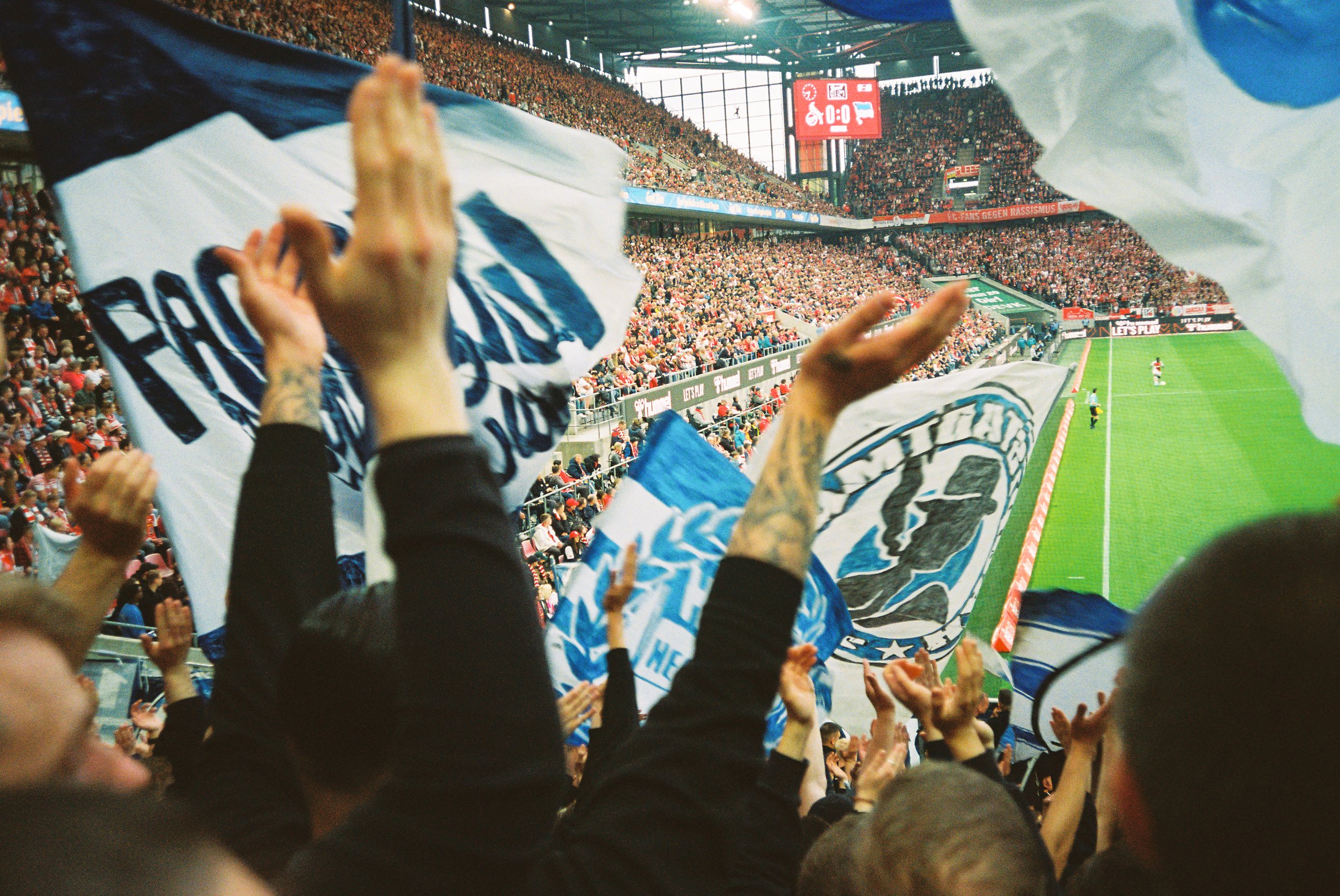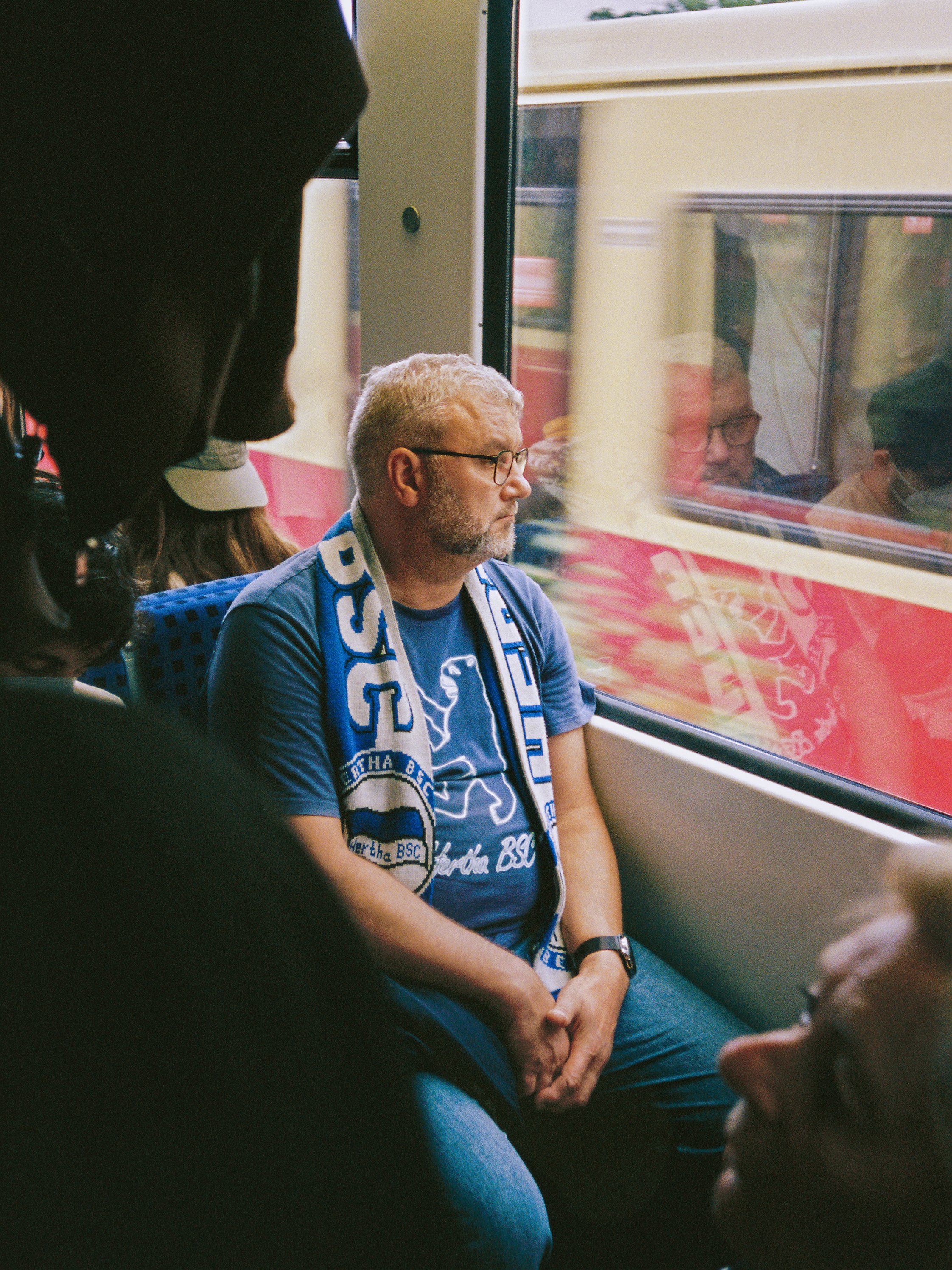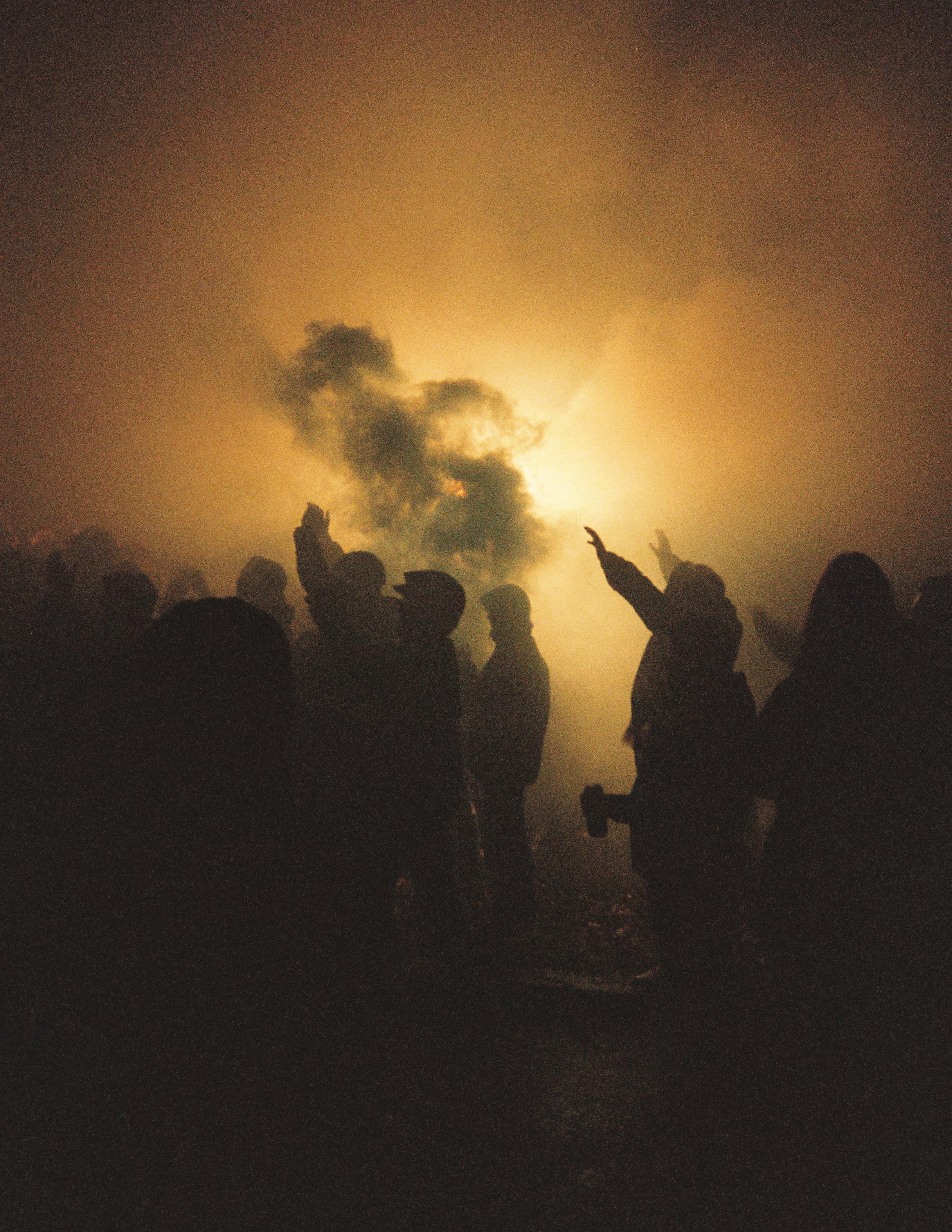Views from the Ostkurve: TCD meets photographer Kasimir Weichert
As one of Berlin’s most prominent young photographers, Kasimir Weichert has a good eye for capturing a mood. Most notably, his work in and around Hertha BSC’s fan scene has earned him a reputation as one of the definitive authorities on the club from the German capital. His unique perspective from the view of the famous Ostkurve is a window into the sanctuary and passion of German fan culture, and his talent has led him to working with the club on shoots with rapper Luvre47 and even on kit launches.
In the midst of a wave of fan protests against creeping financial changes in the DFL, the death of the club’s beloved president, and approaching Euro 2024, we spoke to Kasimir to learn more about his creative process and his insights on Berlin’s blossoming football culture.
The past few months have seen a wave of protests against the DFL’s new investor deal, which has finally been dropped. How important is participating in fan-led protests and movements to German football fans, and what were your thoughts on the proposals in the first place?
I’m relieved and happy that the protests were able to prevent the investor deal, it shows once again the importance – and possibilities – of fan culture and the fan scenes in Germany.
Basically, it's not about wanting to be part of the protests, but rather that almost all fan ‘scenes’, and a large proportion of fans, are behind an idea and philosophy that defines football here and is being fought for. That, namely, is 50+1 and the voting rights of club members.
The deal would have been crossing the red line in a direction where football is only about more money. I mean, the issues have been discussed for a long time. It's about kick-off times, international marketing and possibly even the staging of matches in Saudi Arabia or wherever… as we know it from England or Spain. The fans and members of the clubs don't want any of this and, as they are proud of a democratic club structure with 50+1, they are also fighting for their opinion and vote - because they still have one.
This kind of unity across teams and rivalries feels unique to Germany – especially compared to England or Spain, for example. Why is that? What is it about the structure of German football that encourages this kind of cooperation?
As already mentioned - there are values, principles and the structure of the clubs (members of the clubs have the majority of votes) that, with a few very few exceptions, stand as a foundation for all fan scenes of the clubs - a bit like a democratic constitution - even if that sounds a bit pathetic now.
The special thing is that, thanks to 50+1, the fans and members basically still own the clubs. Even if this has already been shaken and twisted a lot. The protests come from the active fan scenes of the clubs, from the Ultras, who, more than other fans, define themselves through values and a kind of code for football and their respective club. The Ultra movement started at a similar time in German football clubs and is based on the same understanding of the sport and love of the club.
I think that all active fan scenes actually represent this opinion and attitude. The difference to other countries such as England or Spain, even if I am not familiar with the structures in these countries, is perhaps precisely this. In Germany, fans and members are used to having a voice that can really make a difference and have a say. And if you try to ignore the basis of football, namely the fans, then you get protests that are as creative and effective as we've seen now.
It has been an emotional few weeks for the club, with the passing of a legendary figure like Kay Bernstein. What did he mean to the Ostkurve and how big will his Hertha BSC legacy be?
In recent years, Kay Bernstein has been the face and the leading figure for the club, who has brought a real change, who has managed to make the club tangible for the fans again, to be closely connected to the city of Berlin and to live and cultivate the values and specialities that make Hertha so special.
He has established the idea of the Berliner Weg – the Berlin way. He has given the club back to the fans after a period with a disastrous investor, a terrible image and megalomania and one that no longer had anything to do with the values of Hertha BSC. The fact that after such a time the former capo of the Harlekins (a Hertha Ultra group) stood up, ran for president, won and then really turned the club around in such a positive way was a sign for the whole of football Germany. The time he was president was one of the best times for me as a Hertha fan, even though things were going badly in sporting terms and we are in the second division.
But I also think that every Hertha fan would give their own detailed answer to the question. For some, he was already the Capo in the Ostkurve and a mate from the fan scene, many knew him because he was always out and about at fan festivals and events as president and made time for everyone.
I love the story I heard from someone who works at Hertha. After a time with a very distant president, where it felt like a strong hierarchy and he hardly talked to anyone at the office, a new president comes to the office with flip-flops, shorts and an e-cigarette and really talks to everyone at eye level. Unfortunately, I didn't know him personally, but I will miss him very much. We should do everything we can to continue on his/our path.
The spotlight will be on Berlin and Germany this summer. How excited are you for the Euros?
To be honest, I've hardly thought about it so far and I'm only looking forward to it to a limited extent. When the tournament gets closer, I'm sure I'll be up for it and of course I hope that the tournament can create a similarly great atmosphere as it did back in 2006.
But after a World Cup in Qatar, the current state of the German national team and the DFB, which don't arouse much enthusiasm, it's difficult to develop any real hype for it. So far!
How did you get into photography? Did you always want to mix it with your love of football and Hertha?
My father is a photographer and my interest in art, culture and film also came from my mother. That's why artistic, creative work was never really far away for me. Nevertheless, I never wanted to be a photographer, that was my father's thing for me and I also realised that it wasn't particularly easy to earn money with it. Then I discovered film, commercials and this new world for myself.
I developed a great desire to direct, but also realised how difficult it is to tell stories about different topics that interest you, especially because it takes so much time, money, and requires so many people. And it is also pretty hard to show your creative voice, especially at the beginning. That's when I started taking a lot of photographs and finding my own style. While looking for an idea for a longer and bigger project, I came up with the idea of showing fan culture and the inside of fan culture – at that time, especially as a counter-project to the Qatar World Cup and an image of football that has moved away from the culture as I knew it during the pandemic.
When you’re shooting around the Olympiastadion, in the Kneipe, in the Ostkurve… What aspects of football culture do you hope to capture in your photos?
Probably a bit of everything really. Of course, the emotions, the people, the everyday life and the rituals that define this culture, but also the absurd and funny sides — as well as the intense insights that people who don't experience this wouldn't know.
Berlin is a super creative city. Do you still get inspired by its surroundings? Does it make it easier to be creative in Berlin? Are there any other cities you’ve visited where you feel as inspired?
To be honest, there is a difference for me. There are cities where you can't stop seeing pictures because everything feels like a film set and the people in them are super interesting characters. Naples or New York, for example. Berlin itself is not particularly interesting to me as a place for pictures. Except, of course, the football world, with the places that have stood still in time, such as the pubs, snack bars etc. Maybe because you stop seeing things when you've always lived in the city or because a lot of things are developing in a less photogenic direction here.
Nevertheless, Berlin is of course a city where you can draw a lot of inspiration from art, culture and a wide variety of experiences and acquaintances with artists and the very real and unique Berlin characters.
Kasimir Weichert is a photographer and filmmaker based in Berlin. Discover more of his work via his website, or on Instagram.




